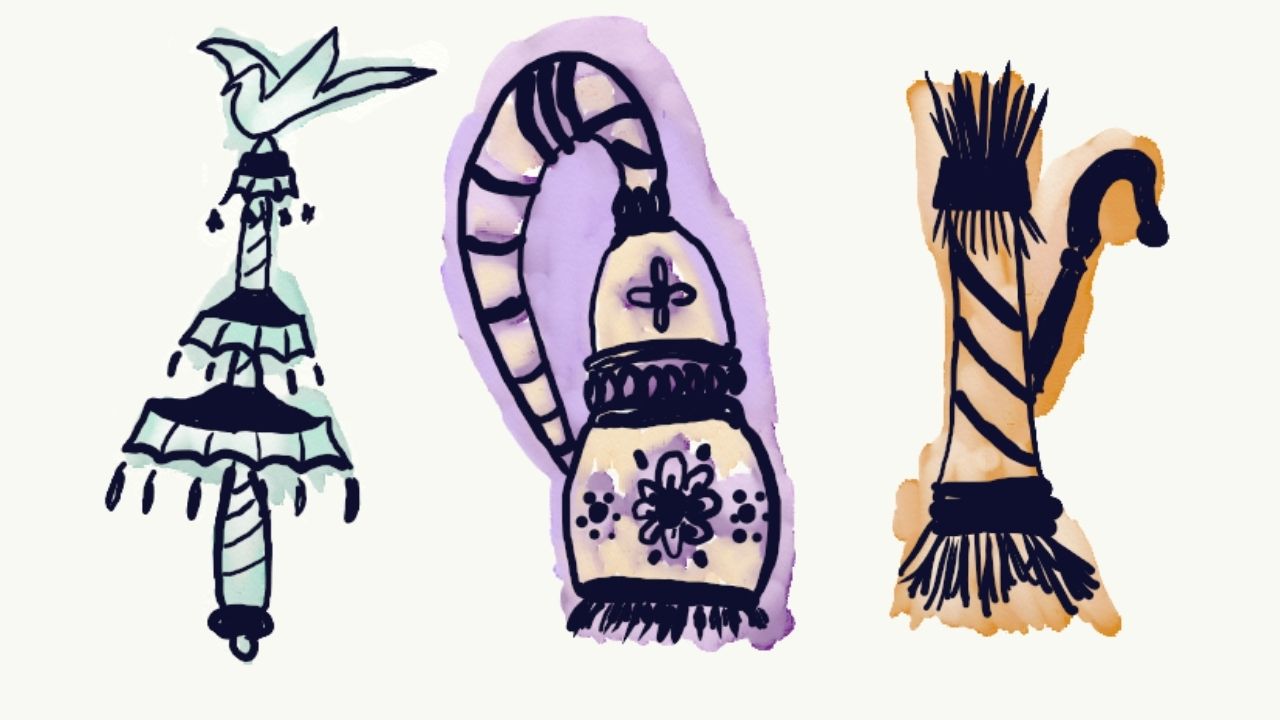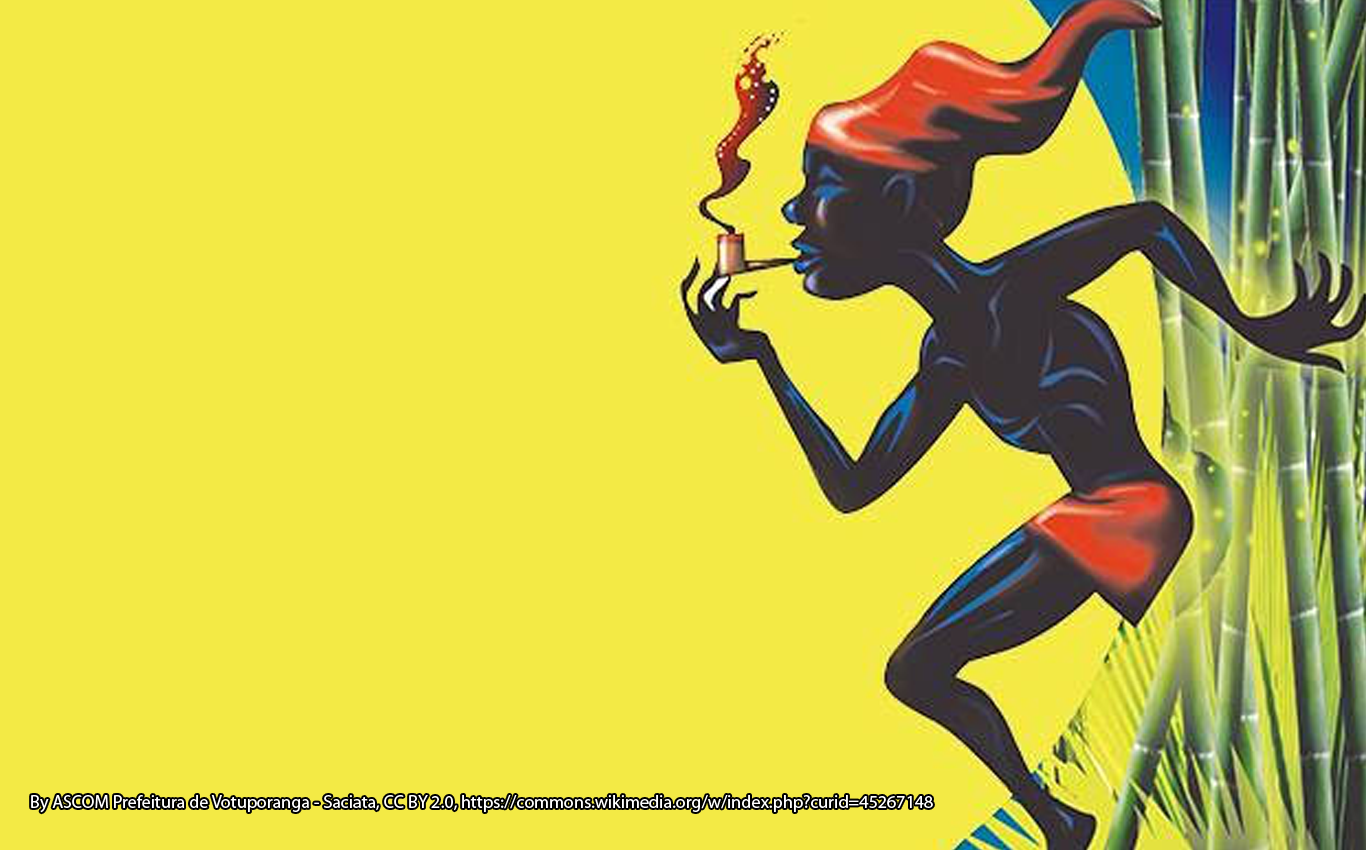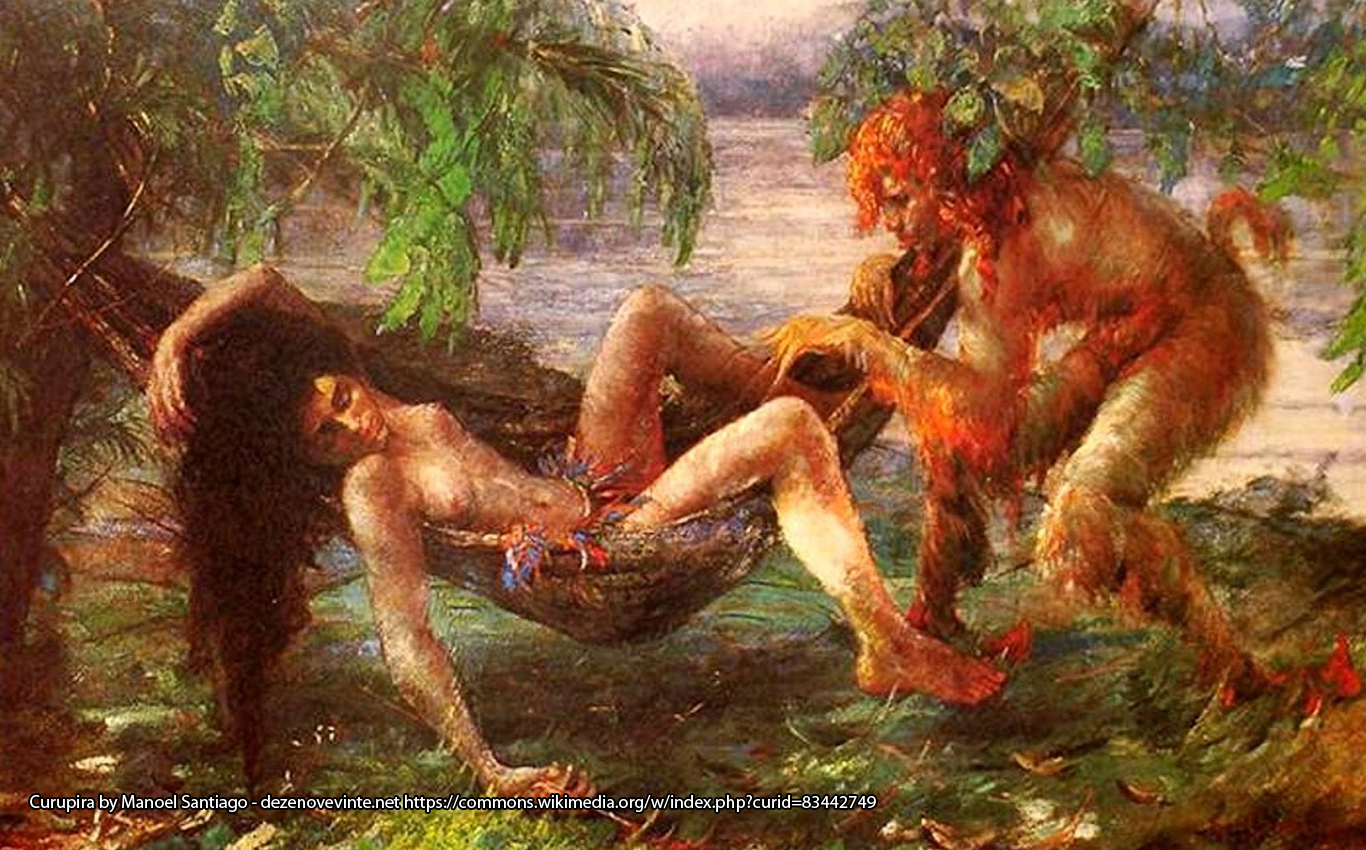Orishas are deities who mainly represent the powers of nature. They also have specific responsibilities and work to balance the universe and its energies. Orishas are predominantly praised among the Iorubá people in West Africa. However, when Africans were brought to Brazil and other countries in the Americas, they also brought their spirituality which flourished throughout the land and syncretised with Christian beliefs.
It may sound surprising, but religions in Brazil are highly influenced by African traditions. Although most of the population declare themselves as Christians, Orishas and other beliefs may be found mixed together in their faith through syncretism. Officially, only around 3.2% of our population follow “other religions” – which include the Afrodescendant religions Candomblé and Umbanda – instead of Catholicism, Protestantism, Spiritism or none of these.
It is said that there are more than 400 different Orishas out there, but some of them are much more popular than others. In this article, I’ll bring three Orishas who are bound to life, death, and rebirth in general. We’ll understand how they are tied to each other and how they keep the flow of life unstoppable.

Orisha Oxalá, the Creator
Oxalá is the creator of the world and human beings. He is also commonly known as Obatalá. He can be represented both as an old man and as a young one.
He rules over the air and he’s omnipresent. In some accounts, he took Nanã as a wife after he cast a spell on her. He was intrigued by how she was able to summon and control the dead ones. They had four Orisha children: Omulu, Oxumaré, Ewa and Ossain.
Oxalá is mainly related to life and creation.
Oxalá Creates Ifé
There was only water and swamps in the beginning. Nothing could flourish there. Above this watery place, there was the sky, home of the Orishas. One of these Orishas, Olorum, assigned Oxalá with a different task: he wanted to be able to walk over the watery place. To fulfil this task, he offered Oxalá a seashell full of earth, a pigeon, and a hen.
Oxalá descended from the sky and deposited the earth on a small area. He put the pigeon and the hen on this earth and they started to spread it. Soon, a huge part of the watery place was covered with earth. Some time later, this earth was solid enough for the Orishas to walk on. This place became known as Ifé (something like “large abode”). He created many trees and living beings. However, he was not able to create human beings. He tried making them out of air, like he was made of. It didn’t work. He tried making them out of wood, fire, and olive oil. None of these attempts worked. That’s when Nanã came to help. She gave him some mud from her home – the bottom of the swamps – and Oxalá moulded the first human beings from it.
At this moment something was set: humans came from Nanã’s mud, and they must return to it when they die.
Creation was complete.

Orisha Nanã, the Crone
Nanã is the most respected Orisha of all. She’s a crone who knows all the secret spells and hidden knowledge out there. She is able to heal wounds and diseases, as well as casting curses and plagues. She’s also the wife of Oxalá, the Creator.
Although her main element is earth, she’s also related to water, but in a different way from other “water Orishas” such as Yemaya and Oshun. Nanã (also known as Nanã Buruquê or Nanan Buruku) is associated with swamps and the riverbed. Everywhere water and earth meet, we have mud. From the mud, we may find creation and destruction. Nanã rules over this.
Orisha Nanã wears white and purple dresses. She always carries an Ibiri, which is a tool capable of warding off evil spirits.
Nanã is mysterious and can be vengeful. No one knows what’s on her mind.
Nanã Gives Birth to Oxumaré and Omulu
Nanã had two children considered to be the opposites of each other: Oxumaré and Omulu. However, the difference between them can only be subjectively noticed by the beholder.
Oxumaré was considered the most beautiful being of all. He had the traits of man and woman. He was colourful like the rainbow. Omulu, on the other hand, was the ugly one. Nanã covered his face and body with raffia so no one would see him (some say no one would mock him. Others say Nanã was ashamed of him).
Oxumaré was raised towards the sky, so everyone would be able to see him. He would bring happiness and beauty to life.
Omulu was hidden and fell victim to all diseases in the world, being known as the pest himself.

Orisha Omulu, Diseases and healing
Omulu is the Orisha related to pests and skin diseases. On the other hand, he’s also a healer. He’s in fact a very intriguing Orisha, just like his mother, Nanã. Also known as Obaluaê, he hides his face and covers all his body with his clothes made of raffia. These same clothes add movement to his dance.
Omulu lived a life with no rules and no limits. He suffered from countless types of diseases and died many times, too. He ultimately represents how life can be enjoyed and can also be dangerous.
Omulu and the Mysteries of Life
Omulu was banished from the presence of the other Orishas. It happened because everything he touched would become sick and probably die. Once, all the Orishas were partying. They got drunk and started mocking Omulu for his wooden leg. After a series of insults, Omulu lost his patience and touched each one of them with his walking stick. They all got sick. After this episode, he was sent to live in the woods where no one would be able to find him. There, he learned all types of spells – both for good and bad intentions. Word of this spread quickly, and he started to be feared by everyone.
One day, while roaming with no destination, Omulu met Xangô – the warrior Orisha. Xangô was coming from the land of the Jejes (Republic of Benin today), where all the people were suffering from a mysterious and incurable disease. He explained the situation to Omulu and instructed him on how to perform a healing spell specifically for that disease. Omulu walked up to the region where the Jejes lived and healed all the population with his magic. In return, he became the king of the Jejes.
Oxalá, Nanã and Omulu – The Balance of Life
As we can see, these three Orishas play very important roles to keep the balance of life:
- Oxalá created everything.
- Alongside Nanã, humans were brought to life.
- Nanã ruled over the dead.
- Nanã also gave birth to beauty (Oxumaré) and also to diseases and healing (Omulu).
- Omulu personified living and dying.
They all symbolise the same mysterious energy that keeps life going in an unstoppable way. They are the forces that make a seed grow, become a tree, bear flowers and fruits, spread them in the wind, decay, and be born again.
It’s never-ending. It’s eternal.





